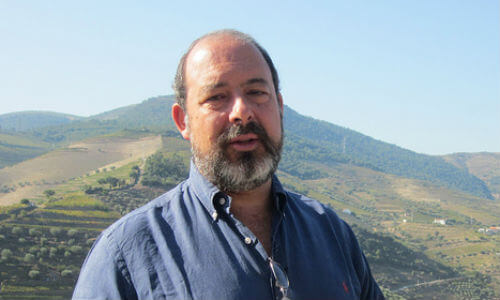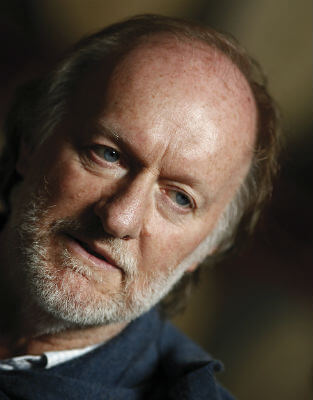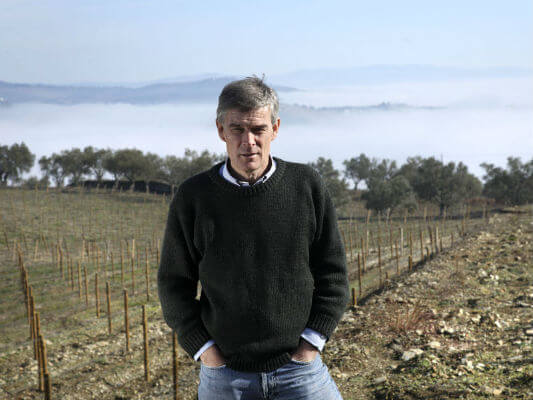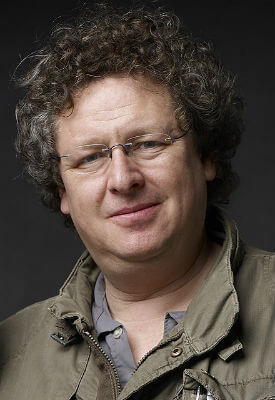Text Sarah Ahmed
One of my favourite varietal anecdotes concerns Cabernet Sauvignon about which Californian winemaker Sean Thackrey memorably intoned, “I wouldn’t want to sit next to it at a dinner party; too damn polite!” Sure enough, this iconic Bordeaux variety is to grapes what pinstripe is to suits – it emanates poise, sophistication, power and control.
In case you are wondering how this has any connection to the Douro, stick with me. In fact, cast your mind back to my February post about a Chyseia vertical with Bruno Prats when I reported how the renowned Bordelais winemaker, a born and bred Cabernet man, exerts a high degree of control over his raw material. Prats professed only to find Touriga Nacional and Touriga Franca “interesting” and stated a clear preference for (single varietal) block planted vineyards over the Douro’s traditional varietally mixed field blend vineyards. Why? So he could “be sure to pick at the right time.”

Cristiano Van Zeller in didu.com.br
The ‘right time’ is a topic in its own right (fellow writer Andrew Jefford explores it here) but, speaking at the annual New Douro tasting in London, Quinta Vale D. Maria’s Cristiano van Zeller begged to differ about the extent to which it is necessary to exercise control over the Douro’s natural assets. Reflecting on the Portuguese character – one which has “liked chaos for a long, long time” – he asserted “we have to make use of our character – a little bit of chaos. We don’t have to control everything. A little surprise every year, that’s what we have been trying to do in the Douro.” Referring to grape varieties, he pointed out “plantings are very different from elsewhere in the world…it’s very difficult for any one grape to really express what the Douro is and what it has to say, so farmers try to find the Douro’s character by adding one to the other.”
There’s a local secret too. Van Zeller revealed, “if you plant by block, grapes have very different ripening dates but, when grapes are all mixed in one single field reasonably randomly, you find that differences in maturity between earliest and latest ripening are much reduced – maybe just three or four days.” The icing on the cake is that field blends necessarily involve a co-fermentation of different grape varieties, a process which The Fladgate Partnership’s David Guimaraens has observed “brings greater dimension of flavour and balance.” It is why he now favours a half way house for new plantings – micro-plots of one variety (just a few rows), which can be cross-picked with other micro-plots of different varieties and co-fermented (you can read his take on the evolution away from and back towards a more mixed varietal approach here.
This new approach might be described as organised chaos but, when van Zeller went on to reveal that old field blend vineyards’ varietal composition is adapted to different terroirs, it would seem that there has always been method in the apparent madness. For example, he reported that the Torto Valley has around 7-8% Rufete, while the Pinhão Valley has more Sousão; Tinta Francisca has always been important at Quinta do Roriz.
For David Baverstock of Quinta das Murças who opened last month’s New Douro Symposium, organised chaos sums up life in the Douro well. He explained the region’s challenges are “what drives us as winemakers – to try and control things as much as possible but knowing that in the end we have to just ‘go with the flow.’ Apart from the field blends and mountainous topography, the weather also plays a big part in any given vintage.”

David Baverstock in blog.esporao.com
The Douro’s diverse terroir was the headline topic for the symposium and, of the four speakers, Baverstock was ideally placed to speak to the progress which has been made navigating it since the 1990s when he left the region for Esporão in Alentejo. He told me “[I]t has changed out of sight. It was very easy back in the early 1990s, there was really no competition back then. Barca Velha was recognized as a great wine but only rarely released. Dirk and Cristiano were only just getting started, Duas Quintas likewise, it was easy to move ahead with projects like La Rosa and Crasto. Now the level of winemaking, quality of wines and understanding of the potential of the Douro with its different meso and micro climates has reached an incredibly high level.”
Drilling down to the topic of soil type, Baverstock talked about the important role of schist in the Douro. Apparently, the Douro is one of the very few regions where the schist is vertically oriented, which allows vine roots to go into the soil between plates of rock. Given the Douro’s limited rainfall, this combined with the friability of schist allows the vines to dig “very deeply” into the soil. Top sites might allow the roots to go down 10 metres or so, which helps vines get through the difficult (hot, dry) growing season. Conversely, schist (especially on steep slopes) is well-drained, which means that vines never get water-logged. Schist is also advantageous because, in a constant state of decomposition, it yields up the trace elements which vines need to survive.
The Douro’s vine roots may go deep down but, as for producers, Paul Symington of Symington Family Estates confessed “we are only beginning to scratch surface of what the real story is in the Douro.” Contrasting it with Bordeaux’s fairly homogenous terroir, he described the Douro “as the most diverse wine region of the great wine regions on earth.” The cornerstones of this diversity? Symington rattled through a long list of factors which impact on wine styles, including a surprisingly wide range of differences in rainfall and temperature depending on location, elevation and aspect. Where “vineyards face each point of the compass,” even within one vineyard, the Symingtons harvest grapes into colour-coded boxes according to aspect. Soil pH across the Douro is very different too, which impacts on a vine’s ability to absorb up trace minerals (it is impaired if soils are very acidic).

Paul Symington in symington.com
Van Zeller’s talk focused on the Douro’s great diversity of grapes and the trend back towards high density mixed varietal plantings, whether Guimaraens’ micro-plots or his own new blast from the past plantings at Quinta Vale D. Maria. “I am mixing it all,” he said, where he has come to understand that quality and character derive not from vine age per se, but from having a varietally mixed vineyard and co-fermenting the grapes (though Dirk Niepoort asserted his belief that an old vineyards “speaks much more loudly” about terroir than variety). Working with a range of varieties is also advantageous where, he pointed out “not every variety is attacked by same disease at the same time or has the same production, so one way or another you can guarantee a certain capacity and the ability to produce excellence most of the time.”
Niepoort’s Dirk Niepoort concluded the symposium by emphasising that “New” in “New Douro” refers to the fact that, until recently, producers only thought about Port – “we all know which are the best vineyards and areas for Port, but something new happened, a different priority and we have to look at the Douro from a completely different perspective.”

Dirk Niepoort in adfwines.com
In Niepoort’s firm opinion the best vineyards for Port are not necessarily the best for DOC Douro wines because “Port likes extreme situations – a south-facing, particularly dry, particularly hot vineyard. But for reds, especially whites, we need something less extreme – north-facing vineyards are much more interesting and, because of coolness at night for acidity, suddenly elevation does matter.” He believes that the best sites for whites are becoming clearer.
Still, Douro DOC wines already represent one third (by value) of production and Niepoort believes that demand for more top quality wine will increase very soon. While Symington had no doubt about top Douro wines’ ability to compete with the best of the rest or the scope for producing a lot more of it, he asked “is the average person on the street willing to pay £20 for a bottle of Douro wine?” For him, the answer is “we’re not there yet.”
Whether you are willing to pay £20, substantially more or less, I discovered plenty of wines to excite among the latest releases shown at the New Douro tasting. The 2013 Whites represent one of the best vintages I have tasted while the best 2012 Reds are broachable, with an elegant charm. Seek, and ye shall find!




Leave a Reply